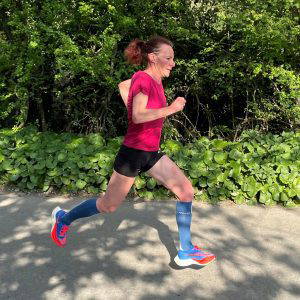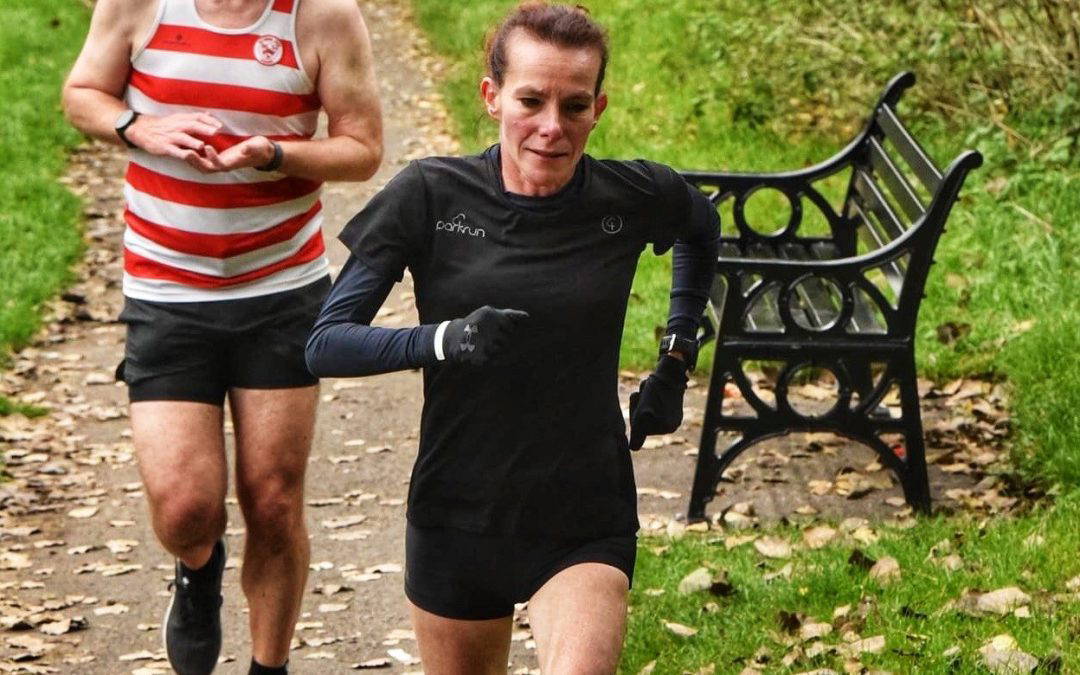How do you keep going when your legs are dying, your lungs are burning and the little voice inside your head is screaming at you to stop?

Practising how to push yourself in training can help you develop the skill to help you run faster in your next race
If you want to be the best, you have to train hard and run faster. This means being able to push yourself to your limits. It’s something that as an athlete I have always been quite good. However, until I started coaching, I hadn’t reflected much on it. Now as a coach I would say it’s both a talent and a skill.
Like all skills, it is something that you can develop with repeated practice in training and races. Learning how to train hard and run faster. Not every session. But if you know in your heart you struggle to push yourself to achieve the results you want in races, then it’s time to practice more in training. So how do you develop this skill?
800ms to Marathon are all on the same continuum of pain but find the one you like best
We all like our pain in different ways. So find the event that is best for you. As someone who progressed from winning national medals as a young athlete in the 800ms up to the marathon as a Masters athlete I have a lot of experience across the range of endurance events. So I can confirm they all hurt. They just hurt in different ways.
There’s the short-lived but intense, lung-searing agony of oxygen debt over 800ms. At the other extreme is the prolonged suffering and attrition in the marathon. The nature and duration of the pain may differ. But they all require the same key ability to push yourself when it gets tough.
What is pain?
A good place to start is by understanding what is “pain”. It’s an unpleasant sensory experience associated with tissue damage. We feel pain when a signal is transmitted along neural pathways to the brain. It’s also an emotional state. In essence, pain is literally all in your head.
This doesn’t make it hurt any less but it can help you to develop some good mental strategies. However, it also makes it trickier when it comes to endurance running because there’s a lot of time to think about a lot of things, including how much it hurts.
Train for pain
Just like VO2 Max or lactate threshold, you can train yourself to develop more effective mental strategies. There’s a lot of sports psychology support available to help. This not to advocate that you should ignore easy days and recovery. But to practice this skill you need to step outside your comfort zone. That means you need to practice pushing yourself hard in training.
As an athlete, the relentless track sessions we ran at Bedford & County AC were critical to my later success. They were long and hard and you hung on even if you thought you were literally dying. We used to “joke” that if you could survive those sessions, then the race would be easy. But all joking aside, those sessions enabled us to develop essential mental resilience.
We don’t always appreciate just what it means to push yourself hard. I was fortunate to watch Paula Radcliffe (and numerous other top international athletes) train on trips to Font Romeu. It was eye opening to see how hard those athletes really push themselves. Closer to home, those Bedford sessions also set an example to others of how to train hard. I remember being collapsed on the inside of the track at the feet of another coach and his group. He gestured towards me and said to the group “THIS is how I want you to be at the end of your session!”
Develop a range of helpful strategies
The best runners develop a range of strategies to help them in different scenarios. Over many years I perfected my ongoing internal dialogue. It consists of a mix of bribery, corruption, threat and deceit. Promising treats. Think how pleased I’ll feel when I’ve done it! Telling myself it’s not that bad. It won’t last forever. One more lap of the track. If you give up now, you will never forgive yourself and all your pain and suffering will have been for nothing.
Distraction such as singing in my head or chanting mantras works well. Even now I always count down the last 60 seconds of every rep. It helps me to focus on the numbers and the here and now. What’s more, it stops the bad habit looking at your watch every five seconds too.
If masochism fails, try sadism

Focus on the suffering of your competitors to help you in races and distract you from your own suffering!
Distract yourself from your own suffering by focusing on the suffering of your competitors! I have always said the best competitive athletes have the perfect balance between masochism and sadism. In the heat of competition (and during those track sessions at Bedford) one of my personal coping strategies was to switch focus to my fellow competitors. Tell myself they hurt just as much as me, or even more. This helped me to hang on while I squeezed out a little bit more effort to make sure I finished them off.
If you want to achieve your best you have to develop the skills to train hard. That means practising how to step out of your comfort zone. Learning how to cope with the pain of searing lungs, lactate build up in your legs and sheer exhaustion and fatigue. The good news is it is a skill you can improve. The bad news is it takes a lot of practice. So next time your lungs are burning and your legs are screaming, tell yourself “this is all in my head” and push harder.
This article was first published in Fast Running in January 2021.


